Living in an older building but keen to heat your house with 100% renewable energy? Simon Lennane shares how he tackled an ambitious project converting his old cottage to ground source heating.
There’s been more recognition recently of heat pumps as an environmental friendly option for heating, having been included in the recent manifestos for the Green, Liberal Democrats and Labour parties. For new buildings, the best option is to reduce the need for heating in the first place by using techniques such as Passivhaus* technology, but heat pumps are an excellent heat source, enabling use of 100% renewable energy.
This is a description of how we retrofitted our 17th century cottage with ground source heating. It was an ambitious project, but in retrospect we are really pleased that we did it. The house is now a steady temperature, with warm floors and no draughts. Once installed, a ground source heating system is pretty much set and forget.
We live in a old cottage on the English side of the Welsh border. It was built in the 1600s as a two room house on a smallholding, at that time housing two families. Every century or so a room has been added on, so this time it was our turn, extending the kitchen. The oil-fired boiler was temperamental, so it was a good excuse to explore alternatives and get away from fossil fuels.
Ground source heat pumps basically bring in the warmth from the soil, which has accumulated over the summer. You could also see it the other way round, as taking the cold from the house and dumping it outside.

There is a small field / orchard next to the house, which was perfect for the heat collection system. This is a system of pipes, arranged in a grid, buried 6 feet beneath the ground, which harvests the trapped solar energy in the soil. Fluid is circulated from the heat pump around the grid, and it gets warmed from 0 to 3 degrees C by the time it gets back to the house. A heat exchanger (similar to that in a fridge) then transfers the heat to the underfloor heating system. Water constantly circulates through a network of pipes under the floors, somewhere between 25 and 40 degrees, gently warming the rooms.
The majority of the energy going into the house is direct solar energy, harvested from the warming of the soil over the summer. The energy investment is in running the pump, which brings the solar energy into the house, giving approximately a 4:1 return on energy invested.

This shows the collectors installed in series, when they should be in parallel. That was complicated to fix – the builders put the soil back before they realised!
Even at a depth of 6 foot, the ground warms up during the summer, which renews the latent heat energy in the soil. When we have snow, the heat collector area is the last place it melts, showing that the ground here has lost some heat, though you couldn’t tell otherwise – the grass still grows on top. In fact, the ground work bringing the less fertile lower soil to the surface has helped a low nutrient meadow to flourish and encouraged lots of bee orchids.
Underfloor heating is great. The stone floors in the kitchen are lovely and warm on a dark winter morning. Getting rid of radiators is a bonus too. This opens up space, allowing furniture to be placed against walls, but also doesn’t create a draught. Underfloor heating works more like a massive hot water bottle, constantly being refreshed. The more surface area you have for this, the lower the temperature the circulating water can be, which is more efficient to run. Pipework runs under the floors, and similarly between the ceiling joists, pushing heat into the upstairs rooms and into the towel radiators, which get warmer the colder it is outside. You can circulate water through skirting boards if you need more surface area for the heat.

The pump also does domestic hot water. Solar water panels use any sunlight to warm the water in the tank. In the evening, the heat pump brings the water up to 45 degrees if necessary, but it is turned off during the day to use direct solar energy wherever possible. Once a week it boosts the tank to 60 degrees to kill off bugs like Legionella.
How to do it
The collectors need a large underground surface area (50 sq m or so) for horizontal collectors, or a borehole for a vertical system. Going deep is more expensive but takes up less space, as you can’t plant trees or build on horizontal collectors once they are in the soil. Wet soil transfers heat better, and a pond would work. A river would be ideal, as you then can’t run out of latent heat. Insulated pipework connects the collectors to the heat pump in the house. The heat transfer liquid is basically water with some blue stuff added to stop it freezing.
The heat pump itself is the size of a large fridge-freezer, with a smaller buffer tank next to it. The pump kicks in occasionally to warm up the circulating water going around the house, sounding like a loud fridge. The temperature outside is monitored and when it’s colder, the circulating fluid becomes warmer, but not much beyond 40 degrees C or so.
We dug out the downstairs floors down to the soil. This was covered with deep foam insulation, and then some stuff like egg trays, holding thin circulating pipes at 10cm intervals. This was covered in concrete, and then a wooden or stone floor on top. We took the downstairs ceilings down to do the same thing between the joists under the floors of the upstairs rooms.

Thermostats in each room set the flow of warm water via manifolds, so individual rooms can be set for time and temperature. In theory, you could even reverse the system to cool a house down.
The concrete screed is the most carbon intensive part of the project, which means it will take some years before we recoup the carbon used in making the change. I’d look into alternate floor substrates if doing it again (cob or pizet? – please comment if there is something suitable).

Obviously, insulation of the house is crucial to save wasting heat. We have as much insulation in the loft as we could fit in – up to a foot deep. Avoiding cold draughts is really important too. If you haven’t already put sealant along the gap under skirting boards, you should do this as soon as possible, as it really does make a difference to your heating bills.
In use
There’s only so much you can do with an old cottage in terms of insulation. The walls are thick but old, though the newer bit is well insulated. The heat transfer through joists and carpets upstairs is less good than stone & wooden floors downstairs, which warm quickly. The secret is to leave the rooms heating gently and constantly. There is some interesting research about perception of heat, which apparently is related to the heat that walls give off, but certainly stable heating without draughts feels comfortable at lower temperatures.
It’s hard to understand why heat pumps are not the default for new builds needing extra heat. It’s much cheaper and easier to install than to retrofit, and provides a very low maintenance way of generating heat from pure renewables. Using nearby parks or green spaces would be an ideal way of mixing natural space and renewable heating. If there isn’t space for the collector system it can go vertically via a borehole.
* See www.homebuilding.co.uk/passivhaus-what-is-it/
Images are all author’s own.
 About the author
About the author
Simon Lennane is an NHS GP in Herefordshire. Simon has an interest in wellbeing and social prescribing, which uses non-medical sources of support in the community to address issues like loneliness and de-medicalise health conditions. In his spare time he grows fruit and makes cider organically, and is also an advocate for Linux and open source / free software.

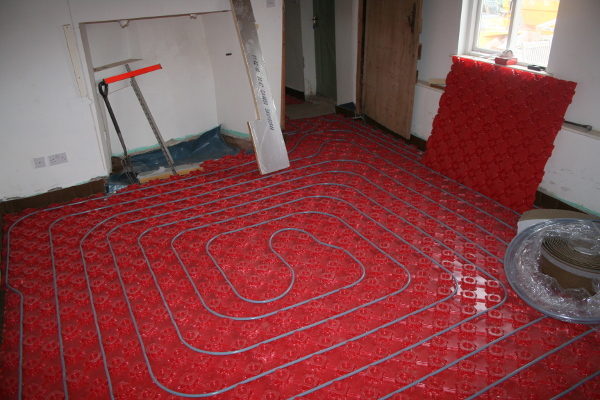
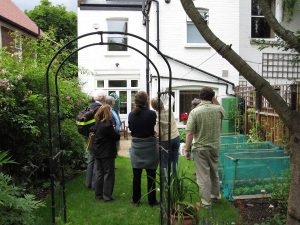
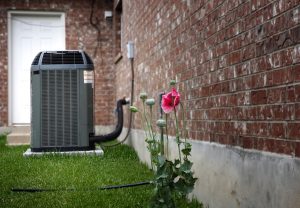
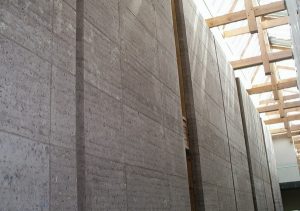
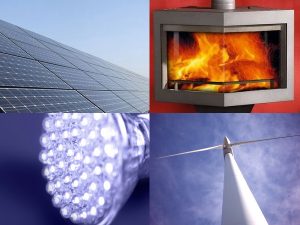
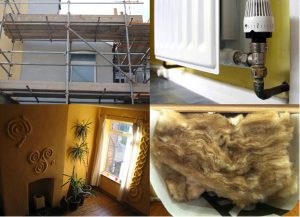
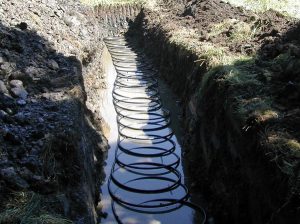
10 Comments
Hi hot water storage is at a minimum of 55 degrees, water regulations specifys and health and safety executive recommends 60, how does once a week raising the temp prevent legionella? Im curious as there are other examples of this being quoted in the trade press.
@dave We have the hot water around 40 degrees C, which is fine for showers etc. and allows the solar hot water panels to add extra energy if sunny.
I’ve been wondering about where to start retrofitting my Victorian mid-terrace cottage but it’s a job to know where to start or where to go for advice (I live in south west Suffolk). Loads of insulation in the roof, only the upstairs (mostly south facing) bedroom to insulate at the back but the entire front (mostly north facing). It’s relatively warm to be honest, so in my state of fundlessness I haven’t really done much, except splurge on some solar panels a couple of years ago. I know my floor will need replacing soon, as it’s still got the original wooden suspended floor it was built with in 1886. Since reading this, where could I go to investigate the option of a deep system? Thinking maybe it could go directly below the house but perhaps that wouldn’t work? Then use local reclaimed floor bricks as the topping/thermal mass? What does anyone think?
https://view.publitas.com/p222-14383/retrofit-insulation-systems-for-old-buildings/page/8-9
We have an old stone and cob cottage and we dug out the substrate and replaced it with glapor and limecrete and underfloor heating
@Simon what are your ground area, floor areas, capital and revenue costs. I already have an old cottage, underfloor water pipes and manifold. (1100 litres of oil delivered today ?)
What would you have done differently?
for everyone interested and able to understand German pls check for “ringgrabenkollektor” (or maybe just pictures will help you). most info to be found on htd-forum looking for rgk, one of the pioneers nick is Crink or on http://www.ringgrabenkollektor.de. there are more + more ppl going into this in Germany for the use of heat-pumps as more effective + easier to install by yourself + cheaper as conventionally earth-collectors (basically just a pipe with fluid). so far I have not seen a cob/clay floor with heating, but more + more wall + ceiling heating embedded in clay..hn
View translated: https://translate.google.com/translate?hl=en&sl=de&tl=en&u=http%3A%2F%2Fwww.ringgrabenkollektor.de
Living in a similar 1700s stone cottage but my understanding is that electric heat pump systems were designed for and are suited much better to insulated homes, where around 4:1 or better efficiency is achievable. In an un-insulated building the CoP is likely to be a lot lower for a given room temperature. So if your aim is purely to reduce carbon emissions but big electricity bills would never be an issue for you, it seems like a good solution.
Interesting read! Thanks for the pictures too – I’ve not seen a horizontal array like that before. Our old stone house is sprawling and single storey so heat loss from absolutely everywhere. Something like 30,000 kWh annual heat demand for a two bed house. Insulation is always the key step before any of this. Like Stephen says above, heating a house to let it out the roof and walls is a fool’s errand. Sadly the upfront capital cost for most people will be prohibitive, especially for retrofit and even more so for properties with insufficient ground space for a horizontal array. We were quoted roughly £36,000 by three outfits for GSHP with 2x 150m boreholes and UFH over 103msq £36,000 excluding floor prep and finish. Boreholes are working out about £7000 each. Even with upfront RHI payment and loan through the Scottish govt grant makes it unaffordable. I’m just not convinced by efficacy of ASHP, especially in Scotland. Ho hum.
Hello Simon,
How’s the system running now its been in for a while? I’ve bought a plot with the same type of underground panels as yours already installed, but nothing else. The previous company has ceased trading so I’m not able to get them back to install the rest of the system. I’ve read another article about a system using these panels that froze the ground. This is making me a bit nervous about utilizing the panels as all other systems now seem to use ‘slinky’ pipework. Thanks, Graham